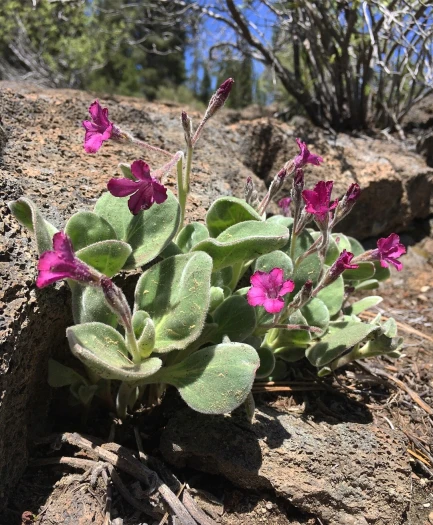Sacramento Waxydogbane
(Cycladenia humilis)
Sacramento Waxydogbane (Cycladenia humilis)
/
/

Matt Berger
CC BY 4.0
Image By:
Matt Berger
Recorded By:
Copyright:
CC BY 4.0
Copyright Notice:
Photo by: Matt Berger | License Type: CC BY 4.0 | License URL: http://creativecommons.org/licenses/by/4.0/ | Rights Holder: Matt Berger | Publisher: iNaturalist | Date Created: 2018-05-27T13:27:11-07:00 |






















Estimated Native Range
Climate Requirements for Bailey's Crossroads, Virginia
| This Plant | Your Site | Plant Suitability for Your Location | ||
|---|---|---|---|---|
| • Precipitation | 6" - 86" | 41" | Aquatic | Aquatic |
| • High Temp. | 53°F - 98°F | 88°F | Your summer temperatures are normal for this plant. | Excellent |
| • Low Temp. | 7°F - 44°F | 25°F | Your winter temperatures are normal for this plant | Excellent |
This plant may not grow well at your location - your precipitation is too high.
Summary
Cycladenia humilis, commonly known as Sacramento waxydogbane, is a perennial herb and the sole species within the genus Cycladenia. It is native to the chaparral and mountainous regions of the southwestern United States, particularly in California, Utah, and Arizona. This plant typically thrives in gypsum-rich soils found in various mountain ranges and is adapted to survive in these specialized and often harsh environments. Cycladenia humilis grows to a modest size, with a typical height of 1-2 feet (0.3-0.6 meters) and a similar width. It features fleshy, bluish-green leaves and produces clusters of attractive, pinkish-lavender flowers. The blooms are funnel-shaped and quite showy, making them a highlight when they appear in the late spring to early summer months.
Sacramento waxydogbane is valued for its unique flowers and ability to thrive in challenging soil conditions, making it a potential candidate for rock gardens and native plant landscapes. It is drought-tolerant once established, requiring minimal water, and prefers full sun to partial shade. While it is not commonly used in widespread cultivation, its striking flowers and adaptability to poor soils can make it an interesting addition to specialized gardens. It is important to note that one variety, known as Jones waxydogbane (Cycladenia humilis var. jonesii), is considered threatened, and thus, cultivation efforts should focus on conservation and preservation of this variety.CC BY-SA 4.0
Sacramento waxydogbane is valued for its unique flowers and ability to thrive in challenging soil conditions, making it a potential candidate for rock gardens and native plant landscapes. It is drought-tolerant once established, requiring minimal water, and prefers full sun to partial shade. While it is not commonly used in widespread cultivation, its striking flowers and adaptability to poor soils can make it an interesting addition to specialized gardens. It is important to note that one variety, known as Jones waxydogbane (Cycladenia humilis var. jonesii), is considered threatened, and thus, cultivation efforts should focus on conservation and preservation of this variety.CC BY-SA 4.0
Plant Description
- Plant Type: Herb
- Height: 0.5-1.5 feet
- Width: 0.5-1.5 feet
- Growth Rate: Moderate
- Flower Color: Pink, Purple
- Flowering Season: Spring, Summer
- Leaf Retention: Deciduous
Growth Requirements
- Sun: Full Sun
- Water: Low
- Drainage: Medium, Fast
Common Uses
Bee Garden, Butterfly Garden, Low Maintenance, Rock Garden
Natural Habitat
Native to chaparral and mountainous regions, particularly in gypsum-rich soils within California, Utah, and Arizona
Other Names
Common Names: Jones’ cycladenia, Low cycladenia
Scientific Names: Cycladenia humilis, Cycladenia humilis var. tomentosa, Cycladenia humilis var. typica, Cycladenia tomentosa
GBIF Accepted Name: Cycladenia humilis